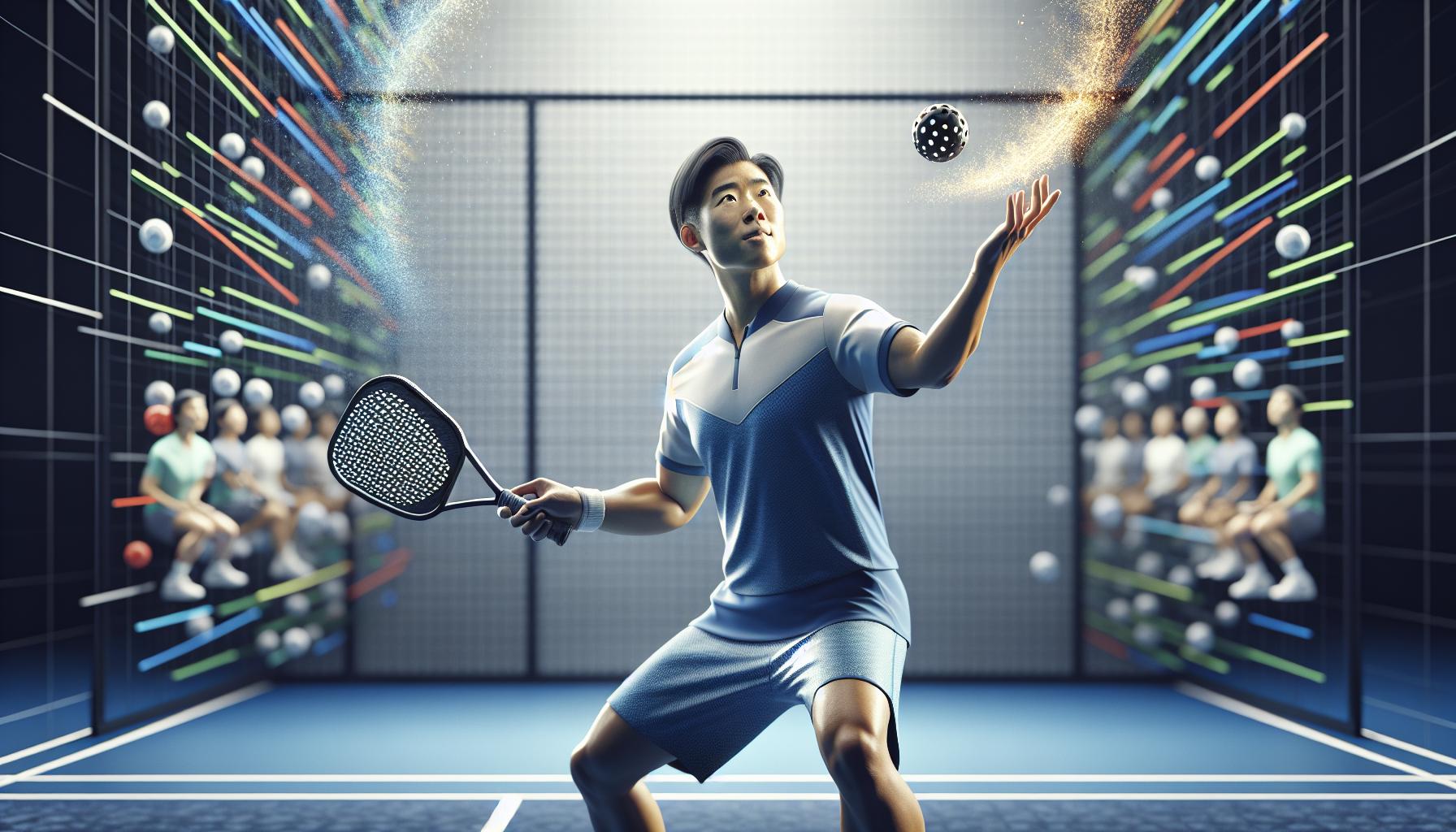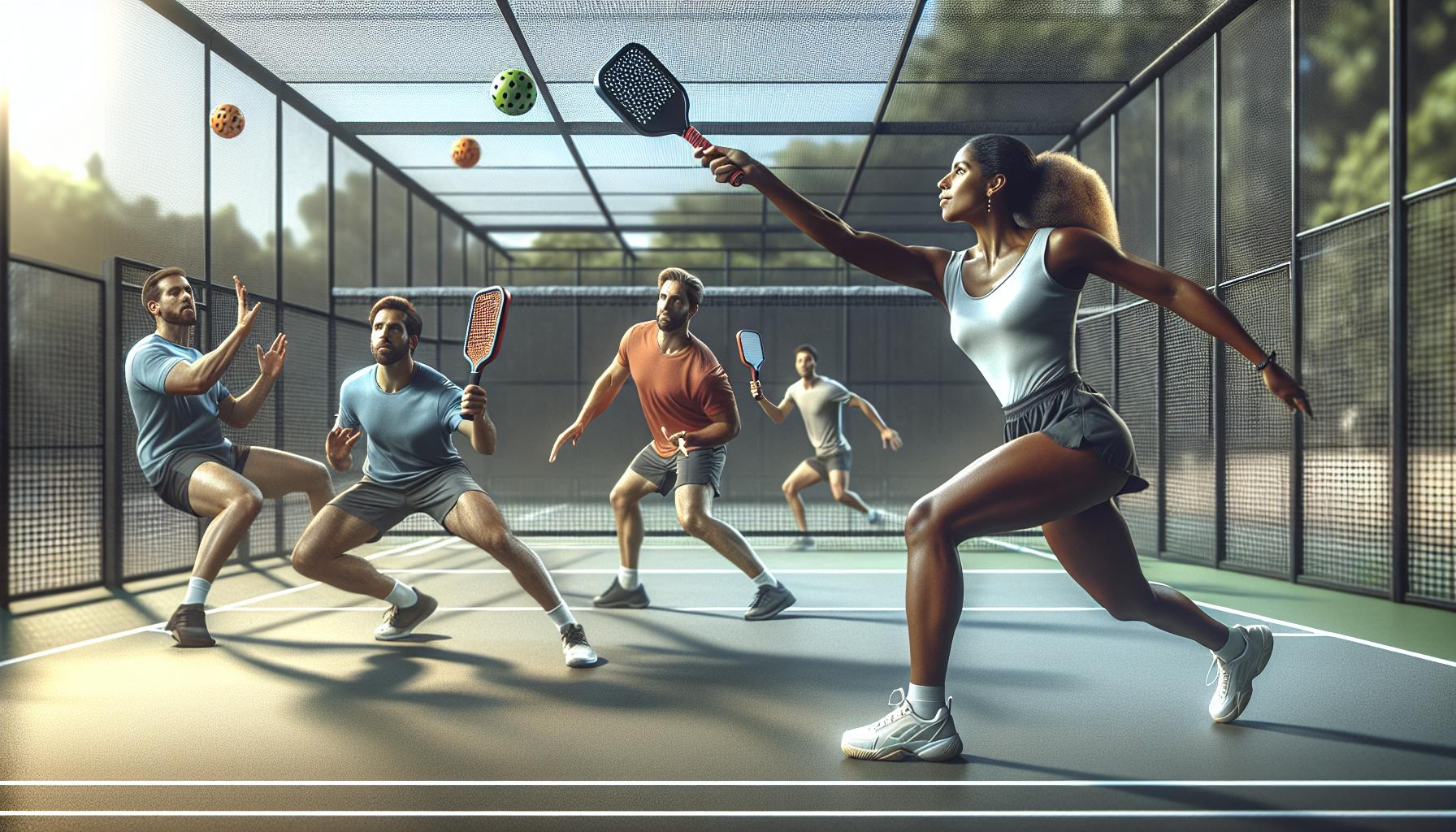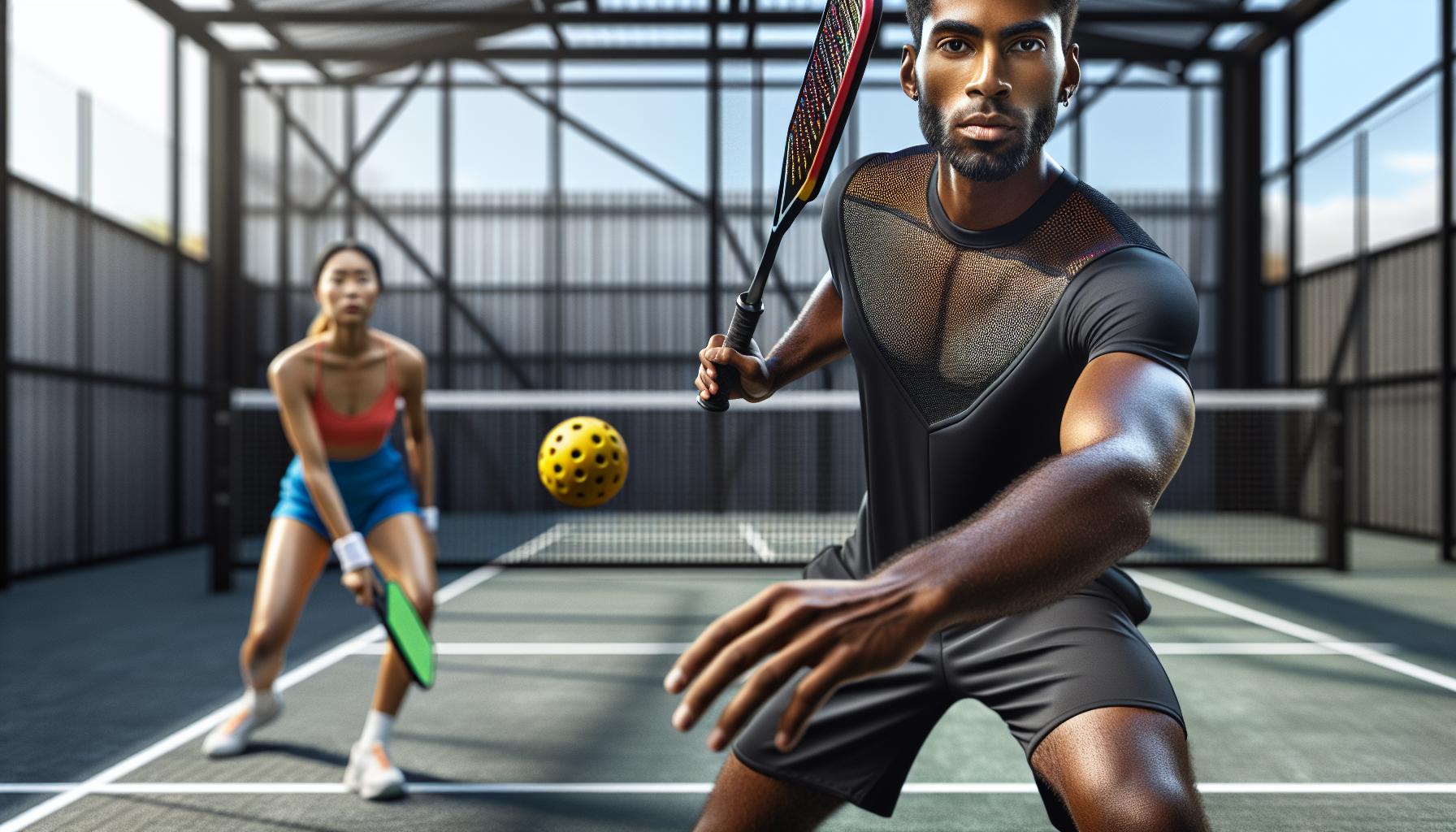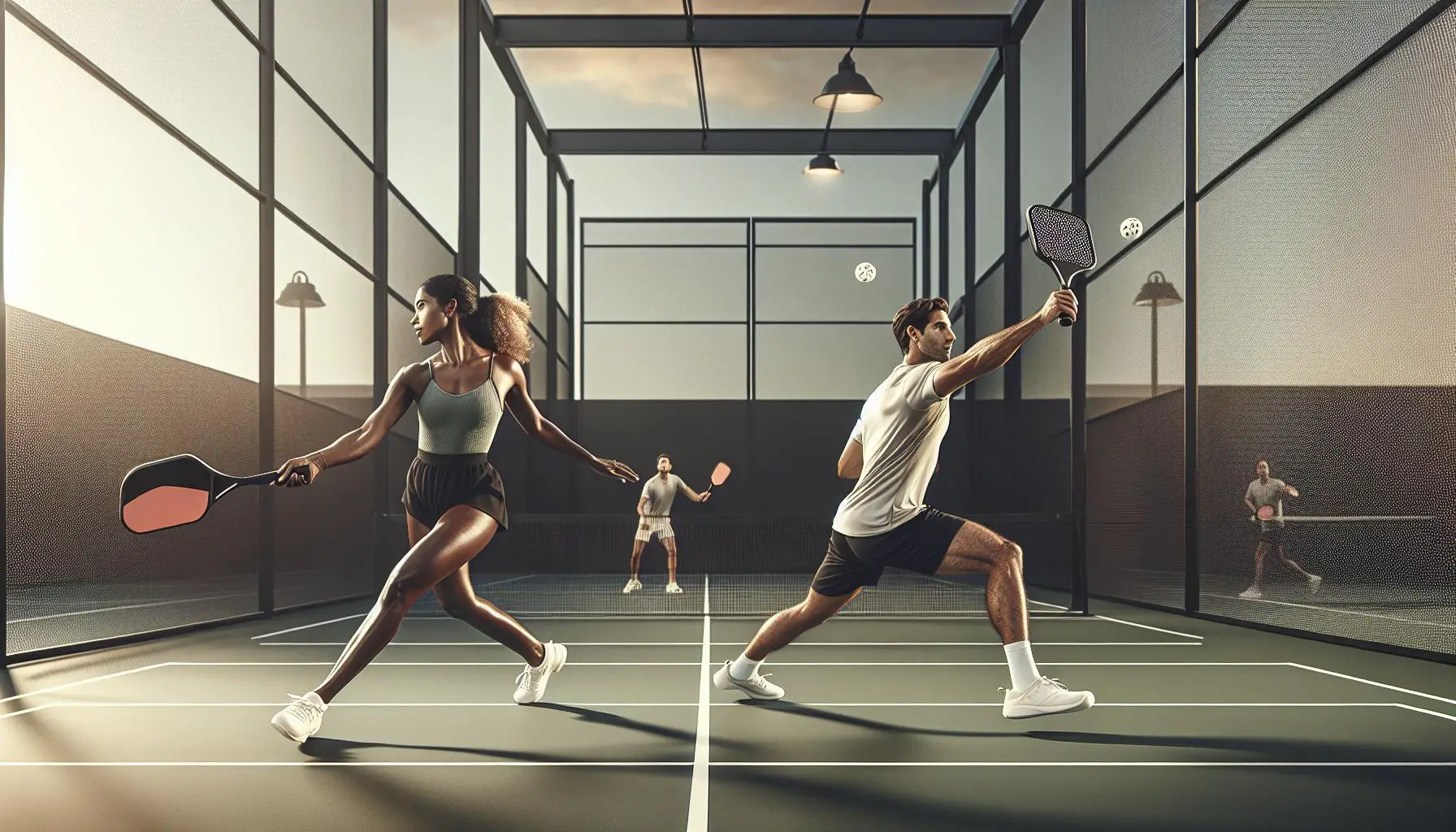Pickleball’s popularity is soaring, and as players move from beginners to advanced levels, the game’s intricacies become more apparent. It’s not just about hitting the ball back and forth; there’s a strategy, finesse, and a set of rules that can make or break a game. For those ready to step up their game, understanding these advanced rules is crucial.
Diving into the world of advanced pickleball, players find a new challenge in mastering the detailed aspects of the game. From the no-volley zone rules to the intricacies of serving, there’s a lot to keep in mind. This guide is designed to navigate through these complexities, ensuring players are not just playing but excelling.
The No-Volley Zone Rule
In pickleball, mastering the no-volley zone, or “kitchen” as it’s affectionately known, is crucial for advanced players aiming to elevate their game. This seven-foot area adjacent to the net is a battleground where points are won and lost, and understanding its rules is essential.
The no-volley zone rule prohibits players from volleying the ball—that is, hitting it before it bounces—while standing within this zone. It’s a regulation designed to prevent players from dominating the game by smothering the net. However, there are subtleties to this rule that players must fully grasp to take advantage of strategic play.
Firstly, it’s important to know that while players cannot volley from within the kitchen, they are allowed to step into this zone any time the ball bounces within it. This allowance encourages a variety of shots and strategies, such as the drop shot, which if executed correctly, can pull opponents out of position.
Another key aspect to remember is that the rule also applies to the player’s momentum. If a player volleys the ball while outside of the no-volley zone but their momentum carries them into it, the action constitutes a fault. This restriction emphasizes the importance of footwork and control, challenging players to think ahead and move with intention.
For doubles play, the rule introduces an additional layer of complexity. Partners must communicate effectively and move in harmony, as any fault by one player affects the team. Positioning and shot selection become even more strategic, with players often utilizing the dink shot to draw opponents into unfavorable positions.
Advanced players also utilize the no-volley zone to set up offensive and defensive plays. By mastering the art of ‘stacking’—where partners switch sides to maximize their strengths—they can manipulate the game to their advantage. Effective use of the kitchen can force opponents into making errors or create openings for aggressive volleys from just behind the no-volley line.
Incorporating drills that focus on precision and control near the no-volley zone can significantly improve a player’s performance. Practicing shots that land just inside the kitchen or utilizing the lob to force opponents back, then quickly following up with a strategically placed volley, can be game-changers.
Serving in Advanced Pickleball

In advanced pickleball, serving isn’t just about getting the ball into play; it’s a strategic move that can set the tone for the entire point. Unlike beginners who might focus solely on serving legally, advanced players understand the importance of placing their serves with precision and exploiting their opponents’ weaknesses from the get-go.
One tactic that’s gained popularity among higher-level players is the power serve. By hitting the ball with significant force, players aim to push their opponents back to the baseline, making it harder for them to return with an offensive shot. However, power serves come with a higher risk of faults, so they require a great deal of practice to execute consistently.
Another strategy is the soft serve. Contrary to the power serve, this technique involves hitting the ball with just enough pace to clear the net while keeping it as close as possible to the no-volley zone. The goal here is to force the opponent to move forward, potentially leading to a weak return and an opportunity for the serving team to take control of the net.
Advanced players also experiment with spin serves. Adding spin to a serve can significantly alter the ball’s trajectory and bounce, making the return more challenging for the opponent. The two main types of spin are:
- Topspin: Causes the ball to drop sooner than expected, potentially catching opponents off guard if they’re positioned too far back.
- Backspin: Makes the ball skid or stay low after bouncing, complicating the return shot, especially near the no-volley zone.
Here’s a quick comparison of serve types and their difficulty levels:
| Serve Type | Difficulty Level |
|---|---|
| Power Serve | High |
| Soft Serve | Medium |
| Spin Serve | High |
Incorporating different serves into their game allows advanced players to keep their opponents guessing and struggling to establish a rhythm. It’s critical, however, to remember that serving strategies in pickleball should align with the player’s overall gameplay style. For instance, those who excel at net play might prefer soft serves to set up quick volleys, while players with strong baseline shots may leverage power serves to create openings for aggressive returns.
Understanding Side-Outs and Scoring Systems

Pickleball scoring systems and the concept of side-outs are fundamental yet nuanced parts of the game, critical for every advanced player to master. In pickleball, scoring can be a bit unique compared to other racket sports, making it essential for players to be fully aware of how points are won, and games are advanced.
The Basics of Scoring
In pickleball, only the serving team can score points. This rule emphasizes the importance of maintaining serve and applying pressure when in the serving position. A standard game is played to 11 points, and a team must win by at least 2 points. For tournaments or more competitive play, matches might extend to 15 or even 21 points, with the same 2-point margin requirement for victory.
Understanding Side-Outs
A “side-out” happens when the serving team violates a rule or fails to win the rally, leading to a loss of serve. This mechanism is pivotal in pickleball as it gives the receiving team a chance to take control and score points. Advanced players strategize to force side-outs by putting the serving team under pressure, making every serve and return crucial components of high-level play.
The Two-Serve System
Pickleball’s unique feature is its two-serve system in doubles play. Here’s how it works:
- The game begins with the first serve from the right-hand court.
- If a point is scored, the serving team switches sides and continues to serve.
- A serve loss (side-out) switches the serve to the partner, unless it’s the team’s second serve, which then passes the opportunity to the opponents.
This system adds an extra layer of strategy since players must be adept both in serving and in strategies to break their opponents’ serves.
Rally Scoring vs. Traditional Scoring
The traditional scoring system in pickleball is contrasted by rally scoring, an alternative method where points can be scored by both the serving and receiving teams. While rally scoring is not widely adopted in official pickleball tournaments, it’s gaining traction in recreational play due to its fast pace and the constant opportunity it creates for scoring. It’s a good practice for advanced players to be familiar with both systems as it enhances adaptability and game understanding.
| Scoring System | Points to Win | Scoring by Serving Team | Rally Scoring |
|---|---|---|---|
Strategies for Advanced Pickleball Players

Mastering pickleball requires not just understanding the rules but also developing strategies that can give players a competitive edge. Advanced players are always looking out for ways to outsmart their opponents and make the most of every play. Here, we delve into essential strategies for players aiming to elevate their pickleball game.
Dinking Strategy: One foundational strategy in advanced pickleball play is the dink shot. This soft, arced shot lands in the non-volley zone, or “kitchen,” making it difficult for opponents to return with power. Successful dinking requires finesse and patience, as the goal is to draw opponents out of their preferred positions, creating openings for more aggressive shots.
Serve and Return: Enhancing serve and return tactics can significantly impact a player’s game. Advanced players often experiment with varying serve speed and placement to keep opponents guessing. Equally, mastering the art of returning serves with precision can neutralize the server’s advantage, setting the tone for the rally.
- Effective strategies include:
- Mixing up serves between power and spin to disrupt the receiver’s rhythm.
- Practicing deep returns to push opponents back and take control of the net.
Third Shot Drop: Mastery of the third shot drop is critical. This shot, executed after the return of serve, is intended to land softly in the kitchen, allowing the serving team to advance to the net. Executing a proficient third shot drop demands practice, as it combines the power of a drive with the finesse of a dink.
Lob and Overhead Smash: Using the lob strategically can catch opponents off guard, especially if they favor playing close to the net. However, players must be ready to defend against the lob with an overhead smash—a powerful, downwards shot aimed at ending the rally. Balancing the use of lobs and smashes depends on reading the opponents’ positioning and responding to their weaknesses.
Court Positioning and Movement: Understanding and exploiting court positioning can make a significant difference in advanced play. Players should aim to control the center of the court, allowing for easier access to returns and greater shot variety. Movement should be coordinated with one’s partner in doubles, with both players moving in sync to cover the court effectively.
| Strategy | Description |
|---|---|
| Dinking | A soft, arced shot landing in the kitchen, forcing the opponent to move forward. |
Mastering Footwork and Positioning

Advanced pickleball players know that mastering the basics of the game merely scratches the surface of what it takes to dominate on the court. As they delve deeper into strategy and skill refinement, the importance of footwork and positioning becomes increasingly clear.
Importance of Footwork
In pickleball, efficient and quick footwork isn’t just about moving rapidly; it’s about moving smartly. Players must be able to transition seamlessly between offense and defense, often within the same point. The keys to effective footwork include:
- Anticipation: Understanding opponents’ patterns and preparing for their next move.
- Balance: Maintaining composure and readiness, especially during volleys at the net.
- Agility: The ability to change directions quickly without losing speed or stability.
Positioning Strategies
Positioning in pickleball involves knowing where to be at any given moment to optimize shot selections and minimize vulnerabilities. Players should focus on the following principles:
- Stay Centered: Keeping close to the centerline of the court allows for easier access to both sides, making it harder for opponents to find open areas.
- Net Play: When at the net, standing slightly behind the non-volley zone line reduces the risk of foot faults and offers a better angle for blocking or volley shots.
- Baseline Play: When playing from the baseline, being mindful of the depth and direction of shots is crucial. Deep, well-placed shots can push opponents back and set up opportunities for advancing to the net.
Dynamic Positioning in Doubles
Doubles play introduces an additional layer of complexity to positioning. Effective teams operate as a single unit, with movements and tactics synchronized for both defensive and offensive plays. Key considerations include:
- Communication: Vocal cues help partners coordinate their movements and shot choices.
- Stacking: This strategy involves both players standing on the same side of the court to leverage strengths or target opponents’ weaknesses.
- Switching: Knowing when and how to switch sides fluidly can defend against opponents’ attempts to exploit the court’s open spaces.
- Lateral Movement Drills: Enhancing side-to-side quickness and stability.
- Shadowing: Mimicking a partner’s movements to improve synchronization in doubles.
- Target Practice: Aiming shots at marked areas to refine precision and control.
Conclusion
Mastering the advanced aspects of pickleball goes beyond just knowing the rules. It’s about integrating strategy, footwork, and positioning into every game. The techniques and drills discussed offer a roadmap for players aiming to elevate their play. Whether it’s perfecting the dink shot, mastering the third shot drop, or employing strategic court positioning, each element plays a crucial role in becoming a formidable opponent. Remember, practice and patience are key. As players refine these advanced skills, they’ll not only see improvements in their game but also in their enjoyment of this dynamic sport. Happy playing!














0 Comments